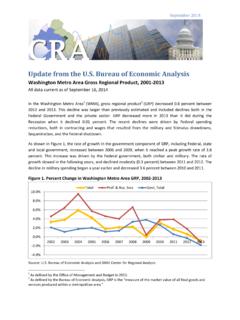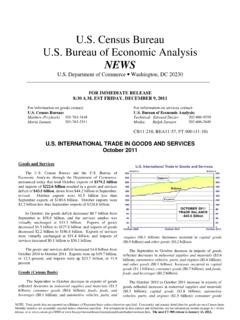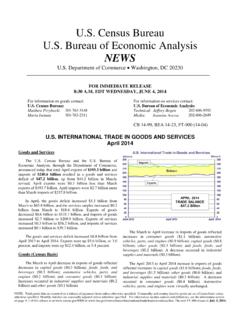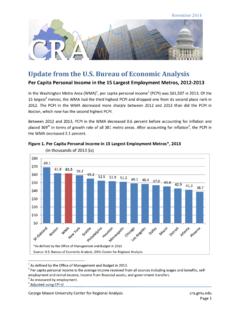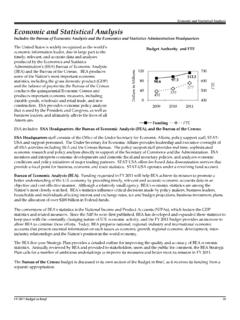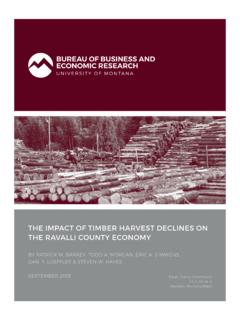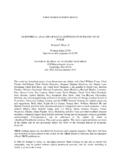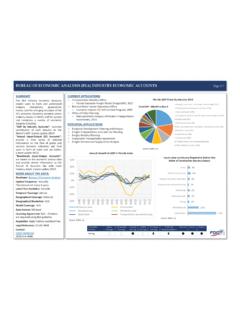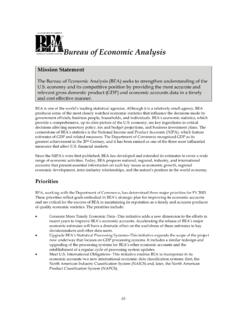Transcription of CHILDREN AND GENDER INEQUALITY: NATIONAL BUREAU …
1 NBER WORKING PAPER SERIESCHILDREN AND GENDER INEQUALITY: EVIDENCE FROM DENMARKH enrik KlevenCamille LandaisJakob Egholt S gaardWorking Paper 24219 BUREAU OF economic RESEARCH1050 Massachusetts AvenueCambridge, MA 02138 January 2018We thank Oriana Bandiera, Tim Besley, Raj Chetty, Claudia Goldin, Hilary Hoynes, Lawrence Katz, Gilat Levy, Marjorie McElroy, Suresh Naidu, Torsten Persson, and numerous seminar participants for helpful comments and discussions. The views expressed herein are those of the authors and do not necessarily reflect the views of the NATIONAL BUREAU of economic working papers are circulated for discussion and comment purposes. They have not been peer-reviewed or been subject to the review by the NBER Board of Directors that accompanies official NBER publications.
2 2018 by Henrik Kleven, Camille Landais, and Jakob Egholt S gaard. All rights reserved. Short sections of text, not to exceed two paragraphs, may be quoted without explicit permission provided that full credit, including notice, is given to the and GENDER inequality : Evidence from DenmarkHenrik Kleven, Camille Landais, and Jakob Egholt S gaardNBER Working Paper No. 24219 January 2018 JEL No. J13,J16,J21,J22,J31 ABSTRACTD espite considerable GENDER convergence over time, substantial GENDER inequality persists in all countries. Using Danish administrative data from 1980-2013 and an event study approach, we show that most of the remaining GENDER inequality in earnings is due to CHILDREN . The arrival of CHILDREN creates a GENDER gap in earnings of around 20% in the long run, driven in roughly equal proportions by labor force participation, hours of work, and wage rates.
3 Underlying these child penalties , we find clear dynamic impacts on occupation, promotion to manager, sector, and the family friendliness of the firm for women relative to men. Based on a dynamic decomposition framework, we show that the fraction of GENDER inequality caused by child penalties has increased dramatically over time, from about 40% in 1980 to about 80%in 2013. As a possible explanation for the persistence of child penalties, we show that they are transmitted through generations, from parents to daughters (but not sons), consistent with an influence of childhood environment in the formation of women s preferences over family and KlevenDepartment of EconomicsPrinceton University238 Julis Romo Rabinowitz BuildingPrinceton, NJ 08544and LandaisDepartment of EconomicsLondon School of EconomicsHoughton StreetLondon WC2A 2 AEUnited Egholt S gaard ster Farimagsgade 5 Building 26DK-1353 Copenhagen IntroductionDespite considerable GENDER convergence over the last century, GENDER inequality in earnings andwage rates continues to be substantial in all countries and the process of convergence has sloweddown.
4 The early literature on GENDER inequality in the labor market focused on the role of humancapital and discrimination (Altonji & Blank 1999), but the disappearance of GENDER differences ineducation and the implementation of anti-discrimination policies suggest that the explanation forthe remaining GENDER gap lies elsewhere. Based on administrative data for the full population inDenmark since 1980, we provide a simple explanation for the persistence of GENDER inequality : theeffects of CHILDREN on the careers of women relative to men are large and have not fallen over a result, almost all of the remaining GENDER inequality can be attributed to provide context, Figure1 Ashows the evolution of the GENDER gap in earnings for full-timeworkers in different countries. It is striking that the cross-country differences in GENDER inequalityhave largely disappeared over time.
5 For example, while GENDER inequality in Denmark was dramat-ically lower than in the United States around 1980, today the GENDER pay gap is between 15-20% inboth countries and appears to have plateaued at that level. That is, GENDER convergence happenedearlier in Scandinavia than elsewhere, but the process also slowed down earlier in Scandinavia al-lowing other countries to catch up. So even though these countries feature different public policiesand labor markets, they are no longer very different in terms of overall GENDER estimate the impact of CHILDREN on the labor market trajectories of women relative to men,we adopt a quasi-experimental approach based on event studies around the birth of the first a range of labor market outcomes, we find large and sharp effects of CHILDREN : women andmen evolve in parallel until the birth of their first child, diverge sharply immediately after childbirth, and do not converge again.
6 Defining the child penalty as the percentage by which womenfall behind men due to CHILDREN , we find that the long-run child penalty in earnings equals about20% over the period should be interpreted as a total penalty including the costsof CHILDREN born after the first one, and we show that the penalty is increasing in the number of1We use the term child penalty throughout the paper, because it is a standard term in the literature. However,whether or not this should be viewed as a penalty on women depends on the underlying mechanism driving it. Forexample, if the effect is driven by women voluntarily selecting into positions that have valuable family amenities (butlower wages), then the effect is not necessarily a penalty as such. We present evidence on such mechanisms as The earnings penalty can come from three margins labor force participation, hoursof work, and the wage rate and we find sharp effects on all three margins that are roughlyequal in we describe below, we are not the first to provide event study evidence onthe effect of parenthood on earnings and labor supply.
7 However, we contribute methodologicallyto this literature by comparing standard event study estimates to more sophisticated event studyapproaches that use control groups or instruments for child birth. These analyses show that theevent study approach, once we control non-parametrically for age and time trends, does a good jobof identifying child penalties even in the long then use the event study approach to shed light on a range of underlying mechanisms thatmay drive the earnings and wage rate impacts. We show that CHILDREN affect the job characteristicsof women relative to men in a way that favor family amenities over pecuniary rewards. Specifi-cally, just after the birth of the first child, women start falling behind men in terms of their occupa-tional rank (as ordered by earnings or wage rate levels) and their probability of becoming , women switch jobs to firms that are more family friendly as measured by the shareof women with young CHILDREN in the firm s workforce, or by an indicator for being in the publicsector which is known to provide flexible working conditions for parents.
8 The importance of thefamily friendliness of occupations and firms for GENDER equality has been much discussed in recentwork ( Goldin 2014; Goldin & Katz 2016), but here we provide clean event study evidence thatthese qualitative dimensions directly respond to the arrival estimated child penalties in the full population allowing them to vary both acrossevent time and across birth cohorts we are able to decompose aggregate GENDER inequality overtime into child-related inequality and residual inequality . We show that the fraction of total earn-ings inequality caused by child penalties has doubled over time, from about 40% in 1980 to about80% in 2013. This dramatic change reflects a combination of two underlying changes: (i) child-related GENDER inequality in earnings has increased from about 18% to 20%, and (ii) total genderinequality in earnings has fallen from about 46% to 24%.
9 3To understand the first effect, note thatalthough the percentage child penalty has fallen somewhat over time, the penalty operates on alarger base due to the general increase in the earnings of women relative to men. While existingwork highlights the importance of parenthood for GENDER gaps, our decomposition analysis goes2 Our ability to precisely estimate hours and wage rate effects relies on a unique administrative measure of workinghours that is available for the full GENDER gaps are larger than those reported in Figure 1A discussed above. This is because the cross-countryevidence in Figure 1 Ais based onmedianearnings forfull-timeworkers, whereas we are now consideringmeanearningsforallworkers as shown in by quantifying just how much of aggregate GENDER inequality is due to CHILDREN and howthis has evolved over time.
10 This exercise is demanding as it requires estimates of the impact ofchildren at each different event time and for each birth cohort, but the Danish data enable us to dothis. The striking finding from this exercise is that child penalties are gradually taking over as thekey driver of GENDER is worth highlighting that our dynamic decomposition analysis represents a departure fromstandard GENDER gap decompositions (seeBlau & Kahn 2016for a review) both in terms of thevariation used for identification (within-person variation as opposed to cross-sectional variation)and in terms of the question asked. Standard decomposition approaches focus on the extent towhich men and women receive unequal pay for equal work: the unexplained GENDER gap aftercontrolling for human capital and labor market variables, but not CHILDREN .
